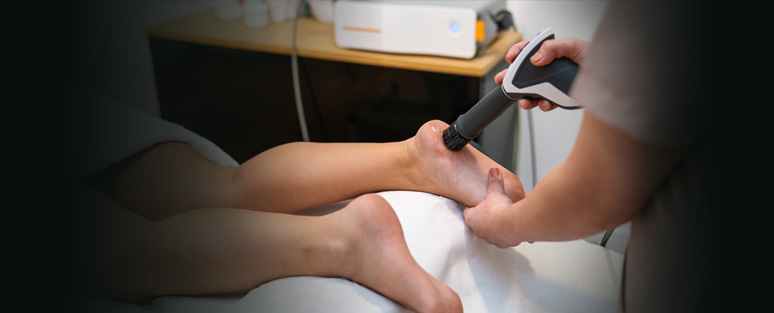
Plantar fasciitis is a prevalent condition affecting millions of individuals worldwide. If you're struggling with persistent heel pain, primarily during those initial steps in the morning or after extended periods of rest, there is a possibility that you might be dealing with plantar fasciitis. With a clearer understanding of this condition, its causes, symptoms, treatment options, and practical steps for prevention, you can proactively embark on a journey towards healing and reduce the likelihood of recurrence.
What is Plantar Fasciitis?
Plantar fasciitis is an inflammatory ailment that takes root in the plantar fascia, a strong band of tissue that spans the underside of your foot, essentially connecting your heel bone to your toes. This ordinary tissue plays an important role in acting as a shock absorber, and it lends support to the arch of your foot. However, when it is irritated or inflamed, it can release sharp, nagging pain, primarily in the region around the heel.
Causes of Plantar Fasciitis
- Overuse: One of the primary factors in the development of plantar fasciitis is overuse and the relentless stress on the feet. This is commonly seen in athletes, particularly avid runners, who subject their feet to constant pounding on firm surfaces.
- Foot Mechanics: Irregular foot mechanics can be a contributing factor to plantar fasciitis. This involves having high arches, flat feet, or an atypical gait, all of which can place excessive strain on the plantar fascia.
- Inappropriate Footwear: The selection of footwear can significantly influence the risk of developing plantar fasciitis. Shoes lacking adequate arch support or cushioned soles can elevate the chances of developing this condition.
- Obesity: Carrying excess weight can intensify the stress on the plantar fascia, increasing the risk of inflammation and pain.
- Aging: The natural aging process robs our muscles and tendons of their youthful elasticity, making them more susceptible to injury. Therefore, plantar fasciitis is more prevalent in individuals aged forty and beyond.
Symptoms of Plantar Fasciitis
The symptom of plantar fasciitis is a sharp, stabbing pain in the heel, specifically noticeable during the first steps taken in the morning or after extended periods of inactivity. This pain tends to intensify after prolonged bouts of standing or physical exertion. Additionally, you might encounter:
- Heel Tenderness: The heel area typically becomes sensitive to the touch or to standing first step in the morning or after immobilization.
- Swelling: Although uncommon, you may notice very mild swelling at the heel.
- Stiffness: A sense of stiffness often surrounds the foot in the early hours of the day.
- Radiating Pain: For some individuals, the pain might extend along the sole.
Diagnosis
To determine the presence of plantar fasciitis, your orthopedic surgeon will conduct a comprehensive physical examination and review your medical history. In some cases, they might recommend diagnostic imaging tests such as X-rays or MRI scans to rule out alternative causes of heel pain, such as stress fractures or heel spurs.
Approaches to Treatment
Conservative non-surgical measures are the first line of defense against plantar fasciitis. These approaches aim to alleviate pain and promote healing without the need for invasive procedures. These options are often explored before considering surgical interventions and provide effective relief for the vast majority of individuals.
Embracing Conservative Measures: Initial Steps
- Rest: Offer rest to your feet by reducing or avoiding activities that aggravate the pain and can help provide relief.
- Ice: Applying ice to the affected area for 15-20 minutes multiple times a day can effectively alleviate inflammation and pain.
- Gastrocnemius Stretch: Engaging in gentle stretching exercises targeting the calf and Achilles tendon can alleviate tension on the plantar fascia.
- Orthotic Devices: Whether custom-made or available over the counter, orthotic shoe inserts can deliver enhanced arch support, thus diminishing strain on the plantar fascia.
- Proper Footwear: Investing in shoes equipped with arch support and cushioning is an essential way of managing plantar fasciitis.
- Anti-Inflammatory Medications: Nonsteroidal anti-inflammatory drugs (NSAIDs) like ibuprofen can play a crucial role in reducing both pain and inflammation. However, it's necessary to use them under the guidance of a healthcare provider.
- Night Splints: Night splints are valuable tools for maintaining the foot in a dorsiflexed position, preventing the plantar fascia from contracting during the night.
- Physical Therapy: Collaborating with a physical therapist who can guide you through exercises aimed at strengthening the foot and ankle muscles, promoting flexibility and stability.
Aggressive Conservative Interventions: Next Steps
- Corticosteroid Injections: In certain rare scenarios, your healthcare provider might recommend a corticosteroid injection at the affected site to alleviate inflammation and pain. Cortisone treatment is limited.
- Shockwave Therapy: Extracorporeal shockwave therapy (ESWT) is another non-invasive treatment modality that uses shockwaves to stimulate healing within the affected tissue and is effective.
- PRP (Platelet-Rich Plasma) Therapy: This approach involves injecting a concentrated solution of your platelets into the afflicted area, effectively stimulating tissue healing, and can have longer-term benefits.
Surgery: Final Option
Surgery is typically suggested for plantar fasciitis when even aggressive conservative treatments fail to provide relief and the pain persists for an extended duration. Surgical procedures may involve:
- Plantar Fascia Release: This surgical intervention entails a partial incision of the plantar fascia ligament to alleviate tension.
- Gastrocnemius Recession: In select cases, taut calf muscles can contribute to plantar fasciitis. Lengthening these muscles can alleviate tension on the plantar fascia.
- Tenex Procedure: This minimally invasive technique harnesses ultrasound guidance to remove damaged tissue within the plantar fascia.
It is critical to acknowledge that surgical interventions carry inherent risks, and the recovery process can be lengthy. Therefore, it is important that your orthopedic surgeon comprehensively explains the potential benefits and complications before proceeding.
Preventing Plantar Fasciitis: A Proactive Approach
Plantar fasciitis prevention is of the utmost importance, especially if you have a prior history of this condition or have risk factors due to your lifestyle or foot structure. To this end, here are practical foot care strategies:
- Proper Footwear: Invest in supportive shoes that offer a good fit while providing arch support and cushioning.
- Stretching: Incorporate regular stretching exercises targeted at the calf and Achilles tendon in your daily routine, with emphasis before and after physical activities.
- Gradual Progression: If you are establishing a new exercise regimen, it is important to gradually increase the intensity and duration, allowing your feet ample time to adjust.
- Maintain Healthy Weight: A healthy body weight can diminish the strain forced on your feet.
- Orthotics: If you possess a history of foot issues or an irregular gait, consider the use of orthotic shoe inserts.
- Listen to Your Body: Sensitize yourself to the initial signs of discomfort and address them promptly to prevent the condition from escalating.
Conclusion
Plantar fasciitis, while potentially debilitating, is manageable when provided with basic information and treatment. If you are struggling with persistent heel pain, consult with an orthopedic surgeon for an accurate diagnosis and a personalized treatment plan. By carefully adhering to the recommended treatment modalities and the practical prevention strategies listed above, you can substantially enhance your quality of life and re-engage in the activities you enjoy. Always consult with a healthcare professional for an accurate diagnosis and individualized treatment plan.














